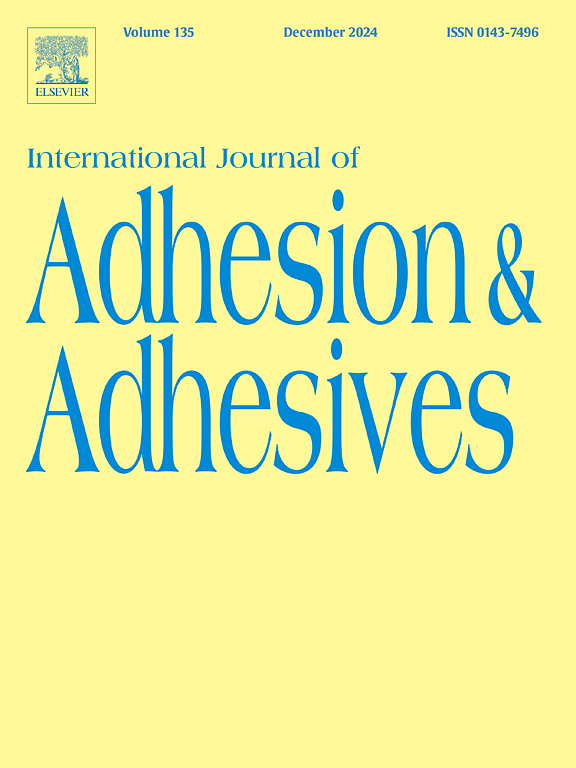Relationships between static contact angles and profile parameters of blast-cleaned carbon steel substrates
IF 3.5
3区 材料科学
Q2 ENGINEERING, CHEMICAL
International Journal of Adhesion and Adhesives
Pub Date : 2025-07-03
DOI:10.1016/j.ijadhadh.2025.104098
引用次数: 0
Abstract
Based on statistical analysis (DoE, ANOVA), the relationships between profile parameters and the wettability of carbon steel substrates were systematically investigated for the first time for all sections of a roughness profile (formation, peak, shape, valley, core). The substrates were blast-cleaned with various grit materials, including steel grit, steel shot, and aluminium oxide. The wettability was determined in terms of contact angle measurements by means of the Wilhelmy plate method. A total of 39 standard profile parameters were recorded with a mechanical stylus instrument. The results were evaluated in terms of significance and Spearman correlation coefficient. For distilled water as wetting liquid, none of the profile parameters showed statistical significance, and 87 % of all parameters exhibited only weak or very weak Spearman correlations. In contrast, for diiodomethane, 82 % of the parameters displayed strong or very strong correlations. For diiodomethane as wetting liquid, the “formation” section of the profile exhibited extremely significant effects on the contact angle and showed the highest average Spearman correlation among all profile sections. The choice of the wetting liquid determined the direction of the Spearman correlations. For distilled water, 64 % of the parameters showed a positive correlation; and for diiodomethane, 72 % of all parameters showed a negative correlation. Simple combinations of profile parameters, as suggested in the literature, did not correlate with the contact angles. A working hypothesis is provided to explain the recorded interactions between wetting liquid and substrate.
喷砂清理碳钢基体静态接触角与轮廓参数的关系
基于统计分析(DoE, ANOVA),首次系统地研究了粗糙度剖面的所有部分(形成、峰、形状、谷、芯)的轮廓参数与碳钢衬底润湿性之间的关系。基材用各种砂砾材料进行喷砂清理,包括钢砂、钢丸和氧化铝。润湿性是用威廉平板法测量接触角来确定的。用机械触针仪记录了39个标准轮廓参数。以显著性和Spearman相关系数对结果进行评价。对于作为润湿液的蒸馏水,没有一个剖面参数具有统计显著性,87%的参数仅表现出弱或非常弱的Spearman相关性。相反,对于二碘甲烷,82%的参数显示出很强或非常强的相关性。以二碘甲烷为润湿液时,剖面的“地层”剖面对接触角的影响极为显著,其平均Spearman相关性在所有剖面中最高。润湿液体的选择决定了斯皮尔曼相关性的方向。对于蒸馏水,64%的参数呈正相关;对于二碘甲烷,72%的参数呈负相关。简单的轮廓参数组合,如文献中所建议的,与接触角无关。提供了一个工作假设来解释记录的润湿液体和衬底之间的相互作用。
本文章由计算机程序翻译,如有差异,请以英文原文为准。
求助全文
约1分钟内获得全文
求助全文
来源期刊

International Journal of Adhesion and Adhesives
工程技术-材料科学:综合
CiteScore
6.90
自引率
8.80%
发文量
200
审稿时长
8.3 months
期刊介绍:
The International Journal of Adhesion and Adhesives draws together the many aspects of the science and technology of adhesive materials, from fundamental research and development work to industrial applications. Subject areas covered include: interfacial interactions, surface chemistry, methods of testing, accumulation of test data on physical and mechanical properties, environmental effects, new adhesive materials, sealants, design of bonded joints, and manufacturing technology.
 求助内容:
求助内容: 应助结果提醒方式:
应助结果提醒方式:


